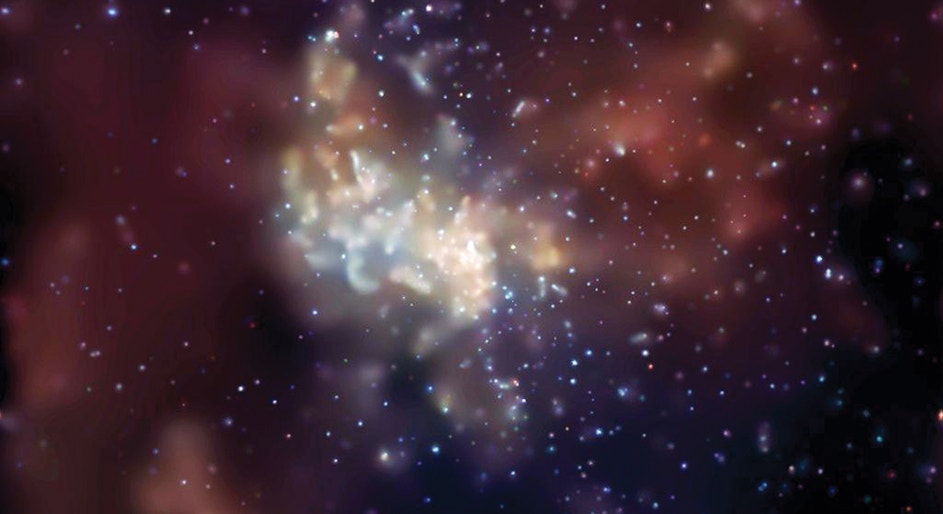Einstein Was Right
Thursday, February 11th, 2016February 11, 2016

Black holes give off gravitational waves. NASA/CXC/MIT/F. K. Baganoff, et al.
This morning, scientists from the Laser Interferometer Gravitational-Wave Observatory (LIGO) announced a monumental discovery: they have detected gravitational waves. These tiny ripples in the fabric of space-time were predicted exactly 100 years ago by Albert Einstein’s general theory of relativity, but even Einstein himself doubted that they could ever be found. Their detection ushers in a new age in astrophysics.
Gravitational waves are a type of radiation that carries gravitational force. According to the general theory of relativity, time and space are not absolutely separate. The theory refers to them instead as a single entity, space-time. Gravitational waves can be thought of as moving ripples in space-time. The ripples stretch and shrink space-time, changing the distance between objects without causing them to move.
Scientists have long suspected that violent cosmic events create powerful gravitational waves. The waves, however, grow weaker as they travel outward from their source. Waves are so weak by the time they reach Earth that they are extremely difficult to detect.

The Laser Interferometer Gravitational-Wave Observatory (LIGO) consists of two facilities—one near Richland, Washington, shown here, and one in Livingston, Louisiana. The facilities use giant L-shaped light interferometers, devices that use light waves to make precise measurements, to search for gravitational waves, a type of radiation created by the movement of matter through space. Such waves stretch and shrink space as they pass through it. National Science Foundation’s Laser Interferometer Gravitational-Wave Observatory
After several rounds of upgrades since their initial construction in 2002, the LIGO detectors, located in Richland, Washington, and Livingston, Louisiana, picked up the signal of gravitational waves in September of last year. Two black holes collided over 1.5 billion years ago, producing ripples in space-time that finally reached Earth. Both observatories, which are shaped like giant L’s, detected minute changes in the length of each arm of the “L.” After all other possibilities, such as earthquakes, were ruled out, the only possible explanation for such a change in distance was the passing of gravitational waves through Earth.
This detection is not the end of scientists’ interest in gravitational waves, but rather the beginning of a new type of astronomy. Now that their existence has been proven, LIGO and other observatories will continue to look for gravitational waves. They will help astronomers learn more about black holes, ultra-dense stars called neutron stars, and even about the origin of the universe itself. Einstein would be proud!


